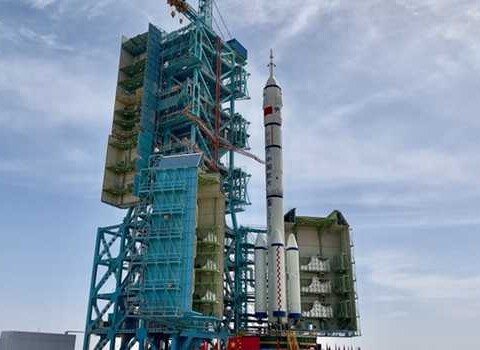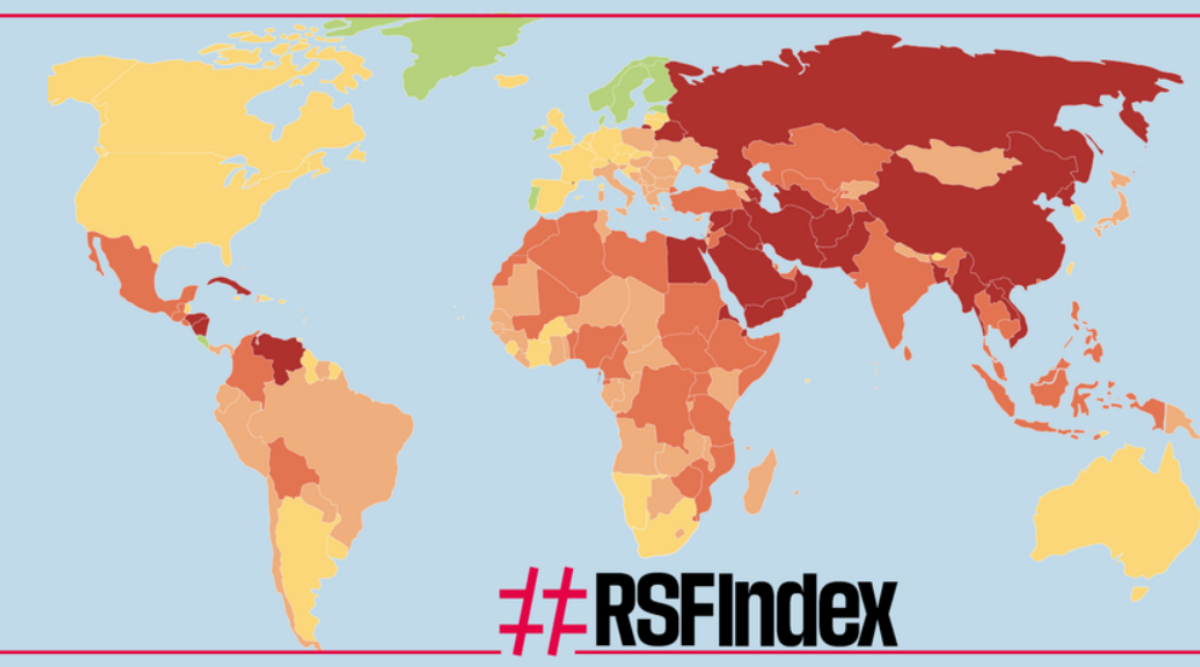Sumera B Reshi
‘Whiskey is for drinking, water is for fighting’, this quote is apt for India and Pakistan and this is exactly what these two adversaries are doing since they were declared free nations on the eve of 14 & 15 August respectively. Not only the territory but water is at the heart of a 71-year old conflict between the nuclear-armed foes.
Water has become a growing source of tension in many parts of the world between nations struggling for growth. Several African countries are arguing over water rights to the Nile.
Israel and Jordan have competing claims to the Jordan River. Across the Himalayas, China’s own dam projects have annoyed India, a rival for regional, and even global, power.
Then how can India and Pakistan leave behind anyone in the resource game which will replace petro-economy in near future? They are also fighting amongst each other beyond territory – and that is water. The two nuclear rivals have been building conflicting power plants along the banks of the turquoise Neelum River for years.
According to the latest United Nations World Water Development Report, by 2030, only 60 per cent of the world’s demand for water will be met by existing resources at the current rate of use.
That will leave 40 per cent of the population without access to the water it needs. Thus, this is a pressing issue for emerging economies, especially in South Asia.
Since the water crises are looming large in South Asia, therefore, both arch-rivals (India & Pakistan) are competing to get a lion’s share on the Neelum because they are craving for freshwater as their populace is surging and the water resources are depleting.
The Indus River into which the waters of the Neelum ultimately flow, is one of the longest on the continent, cutting through ultra-sensitive borders in the region. It rises in Tibet, crosses Kashmir and waters 65 per cent of Pakistan’s territory, including the vast, fertile plains of Punjab province, the country’s breadbasket – before flowing into the Indian Ocean.
Neelum or Kishenganga is a tributary of the Jhelum. It originates in J&K, crosses the Line of Control, runs for some 150 km in Pakistan administered Kashmir, and joins the Jhelum in PaK. India has built a dam on the Kishenganga before it crosses the LoC, and diverted a substantial part of the waters of the river through a tunnel to the hydroelectric project (330 MW) located near Bonar Nala, another tributary of the Jhelum, and then return the diverted waters, after they have passed through the turbines, to the Jhelum via the Wular Lake.
As the Jhelum is in Indian control, its tributary, the Neelum falls into Pakistan’s basket. Since the occupation of the state of Jammu and Kashmir in 1947, both the dominions are competing and fighting for every inch of its land, every drop of its water and every globule of its blood.
What the both feel the burden is – the people of this pious land – mentioned in Lawrence’s ‘the Valley of Kashmir’. To counter India’s the Kishanganga power project; Pakistan launched the Neelum –Jhelum power project in 2008. The dam is expected to produce 969 MWs of electricity after its completion.
Genetically and biologically India & Pakistan are cousins a la Pandavas and Kauravas in Mahabharata but they become a hissing and biting cousin at the very mention of Kashmir. They are always on loggerheads over Kashmir and its waters.
For 71 years, they have been cursing, tormenting and blaming each other on the territory and the water which doesn’t belong to them at all. India has objected to Neelum-Jhelum power project so does Pakistan.
As an Uncle Sam in South Asia, India has tightened the lid of the water reservoir, at which Pakistan has filed a case at the World Bank against India and the Neelum dam which according to them will unfairly restrict the amount of water headed downstream.
Pakistan fears that the production of electricity could shrink by 10 to 13 per cent due to the Indian project. Undoubtedly, the water from Kashmir feeds Pakistan’s 207 million people, hence their point is proved that Kashmir is the ‘jugular vein’ of Pakistan.
It is believed that the Neelum-Jhelum power project is a state-of-the-art hydropower project, with 90 per cent of it being underground and beneath the high mountainous areas.
The Project is located near Muzaffarabad, capital of Pakistani administered Kashmir and has a dam at Nauseri, an underground waterway system, 52 km long tunnels and underground powerhouse at Chattar Kalas with four generating units.
The expected production is believed to be 969 MWs electricity annually at the cost of US $2.16 billion. The Power Station will be connected with Rawat Grid station (in Pakistan) through 500KV double circuit transmission line.
Pakistan, a so-called saviour of the people of Kashmir fought tooth and nail to counter India’s the Kishanganga power project with its maiden hydro project – the Neelum-Jhelum power project in its administered part of Kashmir which is contested without fulfilling basic environmental obligations or without an environmental impact assessment.
The worst is that Pakistan has diverted the Neelum River without considering the repercussions it has on the surrounding areas. Due to the Neelum-Jhelum power project, 50 km of the river has gone arid. Without the least doubt, this diversion of the river Neelum has badly impacted 80 per cent of the area in Muzaffarabad. Muzaffarabad and the areas in close proximity to it have lost its agriculture and precious biodiversity. The diversion of the Neelum has left the signs of disaster behind and has rendered a huge land mass completely barren. The nastiest thing is that all the big & small water bodies which fall on both sides on the Neelum River from Nauseri and Muzaffarabad have become parched resulting in the severe water scarcity in the region.
Earlier there used to be a water supply plant on the Neelum River through which water was supplied to the region but since the diversion, the region is crying for a single drop of water causing acute water crisis in the area. The 750,000 people in the city of Muzaffarabad would be affected because the Neelum River is their chief source of drinking water after it goes through a purification process. However, the project has deprived local people of water for drinking and waste disposal and has already altered the region’s climate. People are afraid due to the uncertain future of the city without the river Neelum. They are concerned that the scarcity of water might even have exacerbated this sudden increase in temperature.
In addition to providing the much-needed power by reducing imports of costly and polluting fossil fuels, the new hydro scheme is also regarded as an attempt to secure rights over Kashmir water. Electricity, too, is a basic human need, but local residents say it must not be generated at the cost of disruption to biodiversity, habitat loss, fragmentation and the displacement of indigenous populations.
Analysts also believe that the hydropower plans are made without looking at the big picture, and as a result, these projects can have negative impacts on the environment.
Many have raised their concerns in Pakistani administered Kashmir’s Legislative Assembly about the environmental impacts of the Neelum-Jhelum project but tragically the local authorities at the helm of affairs and who directly or indirectly are benefitted said, ‘for the sake of Pakistan we will build 100 dams in Pak administered Kashmir.’
Unfortunately, Kashmir has earned puppets in place of leaders who a la a swing change their stance with time. Three provinces in Pakistan – Baluchistan, Khyber Paskhtoonwa and Sindh oppose the construction of Kala Bagh dam or any dam firmly but the irony is that the leaders in PaK have shown their generosity to Pakistan beyond limits. If dams are safe then why don’t people and pressure groups in Baluchistan, KPK and Sindh allow construction of Kala Bagh in their region?
Moreover, experts maintain that the Neelum – Jhelum project runs along the major Tanda and Murree fault lines and a dam could trigger seismic activity or pose a great risk to downstream communities if the dam fails. The tragic May 2008 earthquake in Sichuan, China is a testimony to which dams are vulnerable to earthquake. In many publications, experts have referred the dams as ‘water bombs’ on the Indus, because they are constructed on an earthquake-prone zone.
The Water and Power Development Authority (WAPDA) of Pakistan started the construction by disregarding environmental consideration and the protection of natural resources and wildlife in the local ecological zone.
Nonetheless, Pakistan officials maintain that the project doesn’t pose any threats to the areas ecological system refereeing to the study they conducted in the 1990s. The claims by the Pak authorities have been challenged by local ecologists in Pak administered Kashmir. Yet Pak authorities are unmoved and impassive towards the people they control.
However, Pakistan is worried about its surging demand for the power and is least bothered about the local ecology and its biodiversity. What worries Pakistan is that 40 per cent of its populace lives without electricity and is in a dire energy crisis.
Therefore, it hardly cares about local populace of Pak administered Kashmir, its biodiversity and ecological system.
Pakistan is reeling through a severe power crisis and often curtailment lasts for 16 hours a day, paralyzing the national economy and day to day routine.
The Neelum-Jhelum Hydro project is an attempt to alleviate the huge deficit to meet the growing energy demands at the cost of real sustainable development and eco-system of Pak administered Kashmir. The organization namely WAPDA has been condemned for bludgeoning the rights of the indigenous population. Kashmiris on Pak administered Kashmir fear that the government will deprive them of their arable land and fruit orchards, which already have been affected by the earthquake of 2005 and the Indo-Pakistani rivalry along the line of control – the de facto border of divided Kashmir.
As per the locals, the compensation offered by the government to recompense farmers does not match the market price of the property. In addition, local environmentalists fear that the government has deliberately violated the laws and have expressed deep concern about environmental risks to the local economy and biodiversity. Ecologists firmly believe that the profuse forests, aquatic life and endangered in the project area have significant conservation importance for the Himalayan ecosystem.
Undeniably, the rare species inherited in the area are on the verge of extinction. The world famous Kashmiri otter is now rarely seen in the valley, and ibex, blue sheep, urian, big horned sheep, snow leopards, and flying squirrel are increasingly rare.
India, as well as Pakistan, is eager to build a hydropower project over the river besides using the water for irrigation. However, experts affirm that only one country can build technically feasible power project and use it for irrigation. India had control of over 85 per cent of the water that came from the Indian administered Kashmir. What is in control of Kashmir? Nothing. The greed on both sides has reached meteoric heights. The water which belongs to Kashmir but its rights lies with India and Pakistan.
Since 1989 when the armed conflict broke in Kashmir, the dance of death is going on unabated. What are we fighting for when our resources are already being sold to two nuclear-foes? Isn’t Kashmir on both sides a gone case?
The author can be reached at [email protected].











